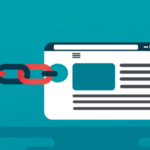Cold emails are a great way to grow your business by effectively reaching prospective customers.

Have you considered using cold emails to help grow your business? Or are you unsure if this direct and effective technique is right for you?
Well, I’m here to tell you that cold emails are an effective way to reach prospective customers and grow your business. They allow you to reach and communicate how your products and services can benefit your prospects directly.
While many shy away from the idea of cold emails out of fear or uncertainty, it can actually be very easy to get started with. From developing cold email templates to tracking success and improving every campaign, cold emails might be just what your business needs to grow.
Here’s a quick look ahead at the tips covered in this article.
- Develop templates to save time.
- Get to know your prospects before reaching out.
- Nail your body copy and subject line.
- Track success and continue to improve.
Tips For Using Cold Emails to Grow Your Business
Cold emails can be a very valuable tool for businesses looking for new growth opportunities. If you’re not quite sure where to get started, check out these tips on how to make the most out of your cold email efforts.
Creating a template will help save you time during the email development phase. Just determine which template works best for your prospect and fill in the necessary information based on their needs.

1] Develop Templates to Save Time
As you continue to grow your cold email efforts, you’ll find that you can save time by developing templates. While it may take some time for you to determine the best format for your cold email templates are a great way to improve your current efforts.
The more you interact with your customers, the more you’ll learn and understand what templates work and don’t work for your prospects. From there, you can adapt your templates for any scenario.
Here are a few examples of common cold email templates.
- The basic outreach email: this cold email template can be used for nearly any situation. It’s a structured, short, and focused message that gets right to the point.
- The demo email: a demo template is meant to provide a brief description of your product and a request to schedule a product demonstration. You’ll want to quickly get to the point without providing all the juicy details about your product (you’ll want to cover that during the actual demo).
- The services email: if your company doesn’t sell physical products but rather a service, this is the email for you. For this template, you’ll want to provide the prospect with relevant data and results to prove how your service can benefit them.
The more cold emails you send, the better you’ll understand what templates work best for your business and prospective customers. Creating templates will allow you to quickly and easily reach new customers and grow your business.
One of the most important steps in creating a successful cold email process doing research and getting to know your prospects before you reach out. This will allow you to improve personalization and increase response rates.

2] Get to Know Your Prospect Before Reaching Out
Cold emails are exactly what they sound like, emails sent to someone who doesn’t know who you are. You’re taking your chances by reaching out to a potential customer and hoping that they’ll see your message in their already busy inboxes.
That’s why getting to know your prospects before reaching out is so important.
Taking the time to research the likes and interests of your prospect can make all the difference when it comes to open rates. Finding a common interest or another way to connect with your recipient will result in more open rates, in turn leading to more conversions.
Here are a few things you should be researching before drafting your cold emails.
- The person you’re about to email.
- Their job position and how long they’ve had that position.
- Any recent news or accomplishments connected to the recipient.
- Specific details about how your product or service can directly help them.
Overall, your cold emails should have a sense of personalization. At the very least, you should be using the recipient’s name and addressing their current position. Remember, you’re the one reaching out to them, you need to make it worth their while.

Taking the time to write a killer subject line and body copy that will entice the recipient to keep ready is really important. You need to know how to write cold emails to get the most out of your messages.
3] Nail Your Subject Line and Body Copy
Writing cold emails may be the hardest part of the whole process, but it doesn’t have to be. You just need to focus on the right things when writing your email content and always remember who you’re writing for.
Not sure how to get started writing? Here are a few tips to help you get started.
- Keep emails concise and straight to the point.
- Tell your recipient who you are and why you’re emailing them.
- Provide them with the value you have to offer them, don’t talk all about yourself.
- Tell the recipient what the next steps you want them to take are.
For many people just getting started, the subject line can be the trickiest part of writing a cold email. That’s because you need to create something catchy enough to grab someone’s attention, but not so catchy that it becomes clickbait.
When writing your subject lines these are a few things you’ll want to keep in mind.
- Keep it short. Many users will read your message on a mobile device and won’t be able to see a long subject line.
- Clear and concise. Don’t try to lure your prospects in with unrealistic subject lines, make it clear what your message is about right away.
- Personalization will increase your open rates and provide you with a connection to your recipient.
For many people, finding the right message to send your prospects is the hardest part, but it will get easier over time. Keep working and follow these tips to write cold emails that convert.
![]()
Tracking the success of your cold emails and learning from the results. Maybe you’re doing one thing great, but need to stop doing something else, without tracking you’ll never know.
4] Track Your Success and Continue to Improve
You should always be tracking the success of your cold email campaigns. Even if your campaign didn’t provide the results you were hoping for, it can become a learning experience.
When it comes to tracking the success of your cold emails, you’ll want to track things such as.
- Open rates.
- Responses.
- Demos requested.
- Sales or deals closed.
As you begin to understand what is working, and what isn’t, you can continue to improve your email strategy to improve your metrics.
Soon enough you’ll know exactly what templates and tactics work best for each of your target audiences. From there, you’ll only continue to improve your cold email performance.
5] Turn Cold Emails Into Your Secret Weapon
Cold emails are a great solution for companies looking to expand their customer base through direct marketing. It’s a great way to get your products and services in front of the right clients and tell them more about the benefits you can offer them.
If you’re looking for a new way to grow your business and reach more prospective customers, cold email is a great solution.
Join 25,000+ smart readers—don’t miss out!









2 Comments
Thank you so much for these tips!
great article!